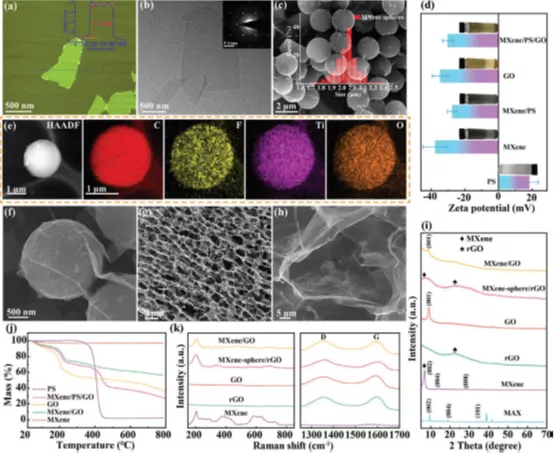
hotline:
17715390137
Tel/Wechat:
18101240246 (Technology)
0512-68565571
Email:mxenes@163.com (Sales Engineer)bkxc.bonnie@gmail.com
Scan the code to follow or search the official account on WeChat:
2D Materials Fronrier After paying attention,
click on the lower right corner to contact us,
Enter enterprise WeChat.
Professional Services Online


With the increasing demand for smart wearable electronic devices. It is necessary to develop a new type of flexible sensing device that can effectively capture small changes in pressure. So far, a large number of pressure sensors have been developed, including capacitive, piezoelectric, and piezoresistive. Among them, piezoresistive sensors stand out because of their low manufacturing cost, good temperature stability, and strong pressure sensitivity. The piezoresistive pressure sensor can convert the change of mechanical strain into the change of resistance. Because of its simple working principle and sensitivity to pressure, it is widely used. However, traditional piezoresistive pressure sensors are usually based on rigid substrates such as silicon. These substrates cannot be skin-mounted, so they cannot meet the portability and flexibility requirements of smart wearable electronic devices. To solve this problem, one method is to use carbonaceous nanomaterials as the substrate for manufacturing highly elastic materials. Although there have been many studies, it is still a challenge to further improve the sensitivity and detection range of carbon aerogel pressure sensors.
With the increasing demand for smart wearable electronic devices. It is necessary to develop a new type of flexible sensing device that can effectively capture small changes in pressure. So far, a large number of pressure sensors have been developed, including capacitive, piezoelectric, and piezoresistive. Among them, piezoresistive sensors stand out because of their low manufacturing cost, good temperature stability, and strong pressure sensitivity. The piezoresistive pressure sensor can convert the change of mechanical strain into the change of resistance. Because of its simple working principle and sensitivity to pressure, it is widely used. However, traditional piezoresistive pressure sensors are usually based on rigid substrates such as silicon. These substrates cannot be skin-mounted, so they cannot meet the portability and flexibility requirements of smart wearable electronic devices. To solve this problem, one method is to use carbonaceous nanomaterials as the substrate for manufacturing highly elastic materials. Although there have been many studies, it is still a challenge to further improve the sensitivity and detection range of carbon aerogel pressure sensors.


Figure 1. Schematic diagram of material synthesis and device preparation.
Figure 2. Characterization of MXene, MXene/PS hybrid spheres, MXene spheres/rGO composite aerogels.
Figure 3. The elastic mechanism and internal microstructure of the MXene hollow ball/rGO aerogel pressure sensor during the pressure release cycle.

Figure 4. MXene hollow ball/rGO aerogel sensing performance.

Figure 5. Using MXene ball/rGO aerogel sensors to monitor various human activities and tiny pressures in real time.

Figure 6. MXene ball/rGO aerogel pressure sensor 4×4 matrix and robot demonstration.
In summary, this article prepared the MXene hollow ball/rGO composite aerogel using sacrificial template method and freeze-drying technology, and assembled it into a piezoresistive sensor. The pressure sensor has excellent durability (6000 times), extremely low detection limit (6 Pa), fast response recovery and high sensitivity in a wide range (for pressure sensitivity below 3.3 kPa is 61 kPa−1, from The pressure sensitivity from 3.3 to 6.4 kPa is 334 kPa−1, and the pressure sensitivity above 6.4 kPa is 609 kPa−1). In addition, the introduction of the MXene ball structure increases the extra contact between the MXene ball and the rGO framework, making the sensing performance of the composite aerogel greatly improved compared to other pure rGO aerogels or MXene/rGO aerogels. In addition, various practical applications of sensors are also explored, revealing their potential applications in soft robots and wearable electronic devices.
Literature link:
https://doi.org/10.1002/aelm.201901064.
Source: MXene Frontie
This information comes from the Internet for academic exchange only. If there is any infringement, please contact us to delete

| Reminder: Beijing Beike New Material Technology Co., Ltd. supplies products only for scientific research, not for humans |
| All rights reserved © 2019 beijing beike new material Technology Co., Ltd 京ICP备16054715-2号 |